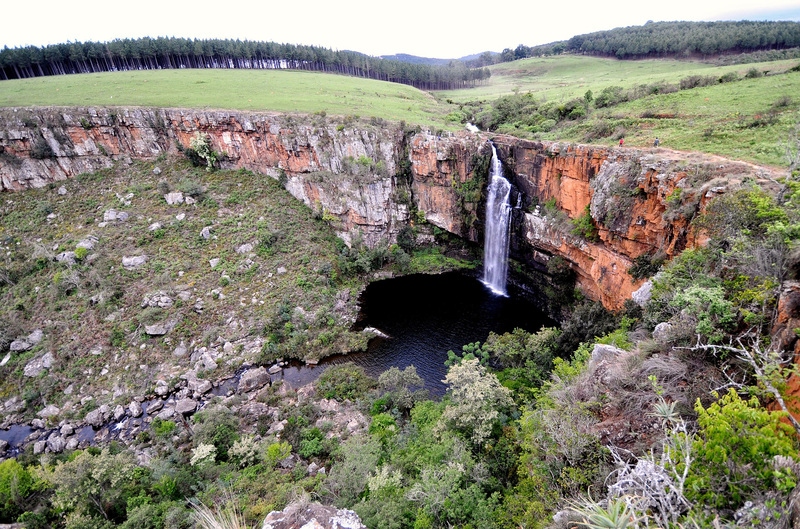Protecting the heart of South Africa’s water supply
27 March 2019 | Story Birgit Ottermann. Photo Denis Doukhan, Pixabay Read time 7 min.
Have you ever considered where South Africa’s water comes from? Not the streams, rivers and dams, but the actual sources – the critical water catchments – that feed our river systems and, in turn, our urban centres, economies downstream and our homes? Have you thought about the legal protection these water sources require, or whether they are indeed properly managed?
Only 13% of South Africa’s strategic water source areas are legally protected. According to Amanda Mkhonza, an environmental law lecturer at the University of Cape Town (UCT) Institute of Marine & Environmental Law, much of our surface water originates from just 22 catchment areas that receive the highest rainfall.
“Think of these areas as the heart of our water supply from which our rivers flow as blood vessels, carrying our lifeblood – our water resources – to sustain our entire country. They are extremely important for the survival of South Africa’s water security and economy, and are therefore known as ‘strategic water source areas’. Yet there is no specific law in place to protect them.
“These strategic water source areas, dotted across five provinces, cover only 8% of our land’s surface but supply us with 50% of our freshwater,” says Mkhonza. “Together, they support 60% of South Africa’s population, 67% of our national economic activity and supply 70% of irrigation water.”
“Think of these areas as the heart of our water supply from which our rivers flow as blood vessels, carrying our lifeblood – our water resources – to sustain our entire country.”
Mkhonza first developed an interest in the legal protection of these areas when she worked as a water lawyer and campaigner at the Centre for Environmental Rights (CER) in Cape Town, a non-governmental organisation and environmental law firm that strives to realise the right to a healthy environment through advocacy and litigation. The legal protection of strategic water source areas has become such an important research topic for Mkhonza that it will also form the foundation of her PhD, which she intends to commence next year.
“It is through my work at the CER that I became aware of the often overlooked but critical value of our strategic water source areas and the multiple threats that they are facing – most notably mining, alien invasive species plantations and overgrazing. Though South Africa’s National Water Act recognises the protection of water resources, such as rivers, it makes no mention of strategic water source areas in particular.
“Similarly, though the National Environmental Management: Protected Areas Act (NEMPAA) provides various categories of protected areas, including national parks, nature reserves and mountain catchment areas, it makes no formal reference to the protection of strategic water source areas.
“As a result, only 13% of these areas enjoy some form of protection – fortuitously by being situated in protected areas. This leaves the vast majority of our water source areas highly vulnerable to inappropriate development.”
Achieving legal protection for our water
As part of her academic research, Mkhonza published a legal review on the current levels of protection for these highly vulnerable sources, as well as analysis of the effectiveness of this protection. This research covered various natural resources laws, such as those regulating water resources, biodiversity and protected areas – and culminated in a chapter in the book Law | Environment | Africa (2018).
“Providing adequate legal protection of our strategic water source areas is a constitutional obligation towards the current and future generations of South Africa, to ensure water security and water supply for all.”
“Achieving legal protection for our strategic water source areas is a long and drawn-out process. However, we hope to achieve change over the medium- to long-term by influencing the drafting of specific provisions in the next pending version of the National Water Act, which has been in the making for years already.”
To initiate a roadmap towards the implementation of specific environmental legislation for these areas in practice, Mkhonza facilitated an important multi-stakeholder workshop in Cape Town last year.
“A diverse group of stakeholders who already undertake work related to strategic water source areas – ranging from government officials and provincial planners to civil society organisations and scientists – brainstormed over two days to explore strategies and identify steps required to best facilitate the legal protection and management of our strategic water source areas.”
Mkhonza and her colleagues are also encouraging the Department of Environmental Affairs to implement a relatively new provision in the National Environmental Management Act (NEMA), which empowers the Minister to identify areas in which certain activities are either prohibited or restricted on certain terms and conditions. This could prevent damaging activities, such as mining, in that identified area.
“Achieving this would be the quickest and biggest win for strategic water source areas in the short term, as it is already legally backed,” says Mkhonza.
Landmark court case
An important victory for environmental justice and the protection of one strategic water source area was the ruling by the North Gauteng High Court last year to set aside permission for planned mining in Mabola, a protected environment near Wakkerstroom in Mpumalanga.
“In 2016, a mining company was granted permission jointly by the departments of Mineral Resources and Environmental Affairs, to develop a coal mine in the Mabola Protected Environment. Not only is Mabola a protected area, it also falls within the Enkangala Drakensberg strategic water source area, which supplies water to parts of Mpumalanga, KwaZulu-Natal, Gauteng and the Northern Cape,” Mkhonza explains.
“Only 13% of these [catchment] areas enjoy some form of protection – fortuitously by being situated in protected areas. This leaves the vast majority of our water source areas highly vulnerable to inappropriate development.”
“Although the CER succeeded purely on procedural grounds – as the ministers did not make their decisions openly and transparently or in a manner that promoted public participation – this decision remains an important first step towards the protection of strategic water source areas in court.”
Mkhonza concludes by underlining government’s role as custodians of South Africa’s most precious natural resource.
“Providing adequate legal protection of our strategic water source areas is a constitutional obligation towards the current and future generations of South Africa, to ensure water security and water supply for all. As an environmental lawyer and researcher, I have made it my mission to help bring this to fruition.”
 This work is licensed under a Creative Commons Attribution-NoDerivatives 4.0 International License.
This work is licensed under a Creative Commons Attribution-NoDerivatives 4.0 International License.
Please view the republishing articles page for more information.










